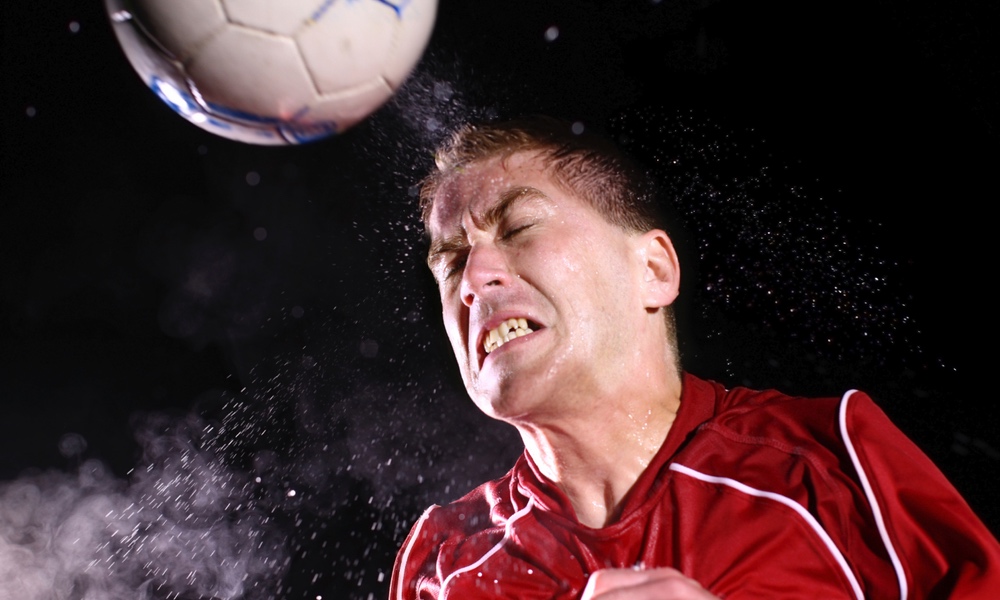The role of repetitive head impact (RHI) and traumatic brain injury (TBI) in disrupting brain structure and function has been a hot topic in the medical and popular news. The NFL's $765 million dollar settlement with its players in 2013 marked the beginning of a new era of awareness of the damage that repeated jarring of the brain in its skull can cause.
Numerous studies have demonstrated that traumatic brain injury can result when the brain is subject to repeated concussions such as those that occur in contact sports like football and soccer.During childhood certain portions of the brain are especially vulnerable to traumatic injury.
RHIs happen to amateur and professional football players hundreds of times during the course of a season. Even impacts that are not strong enough to cause obvious symptoms of concussion at the time of occurence can have long-lasting consequences. They can create problems with thinking and reasoning skills, mood and behavior, and leave a person susceptible to degenerative diseases.
There appear to be critical periods during childhood, when certain portions of the brain may be especially vulnerable to traumatic injury. Repetitive head impacts during these periods may cause lasting effects on brain tissue and neural pathway development whose impact may be seen decades later.A study finds a relationship between the age at first exposure to repetitive head impact, and the degree of neurological problems seen later in life.
A recent study found a relationship between the age at first exposure to repetitive head impact, and the degree of neurological problems seen later in life. The researchers identify the corpus callosum, the largest brain structure that connects the two cerebral hemispheres, as the potential source of the problem.
The players' symptoms included memory problems, difficulty with organizing and planning, impulsivity, violence, depression, anxiety, and lack of interest in activities.
The participants were divided into two groups, based on the age at which they had begun to play football: Those who participated in tackle football before age 12, and those who participated at age 12 or older.Former NFL players who started playing tackle football before age 12 had more changes in their brain structure than those who started at age 12 or older.
The researchers, a team from Harvard Medical School, Boston University Medical School and Brigham and Women's Hospital, used a refined type of MRI scan, diffusor tensor imaging (DTI), to look at the microstructure of the corpus callosum and identify changes.
The results showed that the group whose age at first exposure to repetitive head impacts was younger than 12 years old reported more organizational problems, more apathy, and more depression. They also performed significantly worse on tests that measured executive functioning (attention, organization, reasoning, etc.) memory, and verbal intelligence.
The DTI scans showed alterations in the white matter microstructure and functional pathways of the corpus callosum that were consistent with the behavioral/cognitive findings.
The group that began their exposure after age 12 reported fewer symptoms, and did better on tests of brain/thinking/behavioral functions and had fewer white matter abnormalities on DTI.
The researchers conclude that former NFL players who started playing tackle football before age 12 had more changes in their brain structure than those who started at age 12 or older, and these were reflected in symptoms and tests of cognitive and emotional functions.
For parents this means trying to delay your child's entry into contact sports. Throughout childhood and adolescence there appear to be critical periods of brain development. When boys are 10 to 12 years old, certain brain structures, including the corpus callosum, increase in size and thickness. The research suggests that repetitive head impact during this period may disrupt normal development and maturation of nerve cells, causing permanent alterations in the white matter structure of the brain.Repetitive head impact during this period may disrupt normal development and maturation of nerve cells, causing permanent alterations in the white matter structure of the brain.
Although this study targeted a small and specific group of participants, the results add to the growing body of knowledge about repetitive impact injury and acute and chronic brain injury. It highlights the likelihood that there are critical windows of vulnerability during which repetitive trauma may be more dangerous than others and cause long lasting changes.
More research is needed to complete the picture, but parents and coaches should be aware of the short- and long-term consequences of recurrent head trauma, and athletic policies created for the safety of both amateur and professional athletes, should reflect the growing understanding that young brains are particularly vulnerable to repetitive head impact.
The study is published in the Journal of Neurotrauma.





